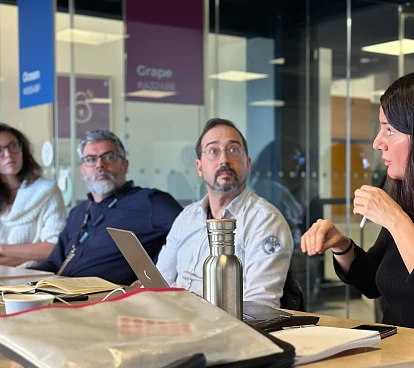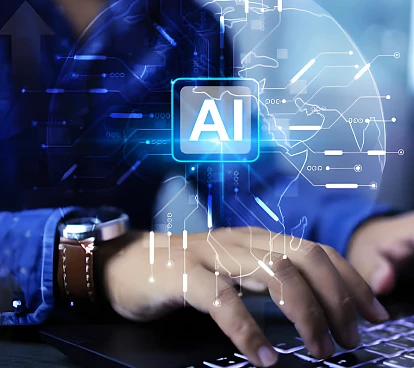
Targets for the public sector in the digital age
July 13, 2022
Digital technologies can bring massive benefits to the realm of public administration. They can help boost efficiency, improve management and help public officials provide better and more convenient services to citizens. But even though government bodies have been working on digitizing their services for years, they still have a long way to go. This is abundantly clear when we consider citizens’ views of how well digital services work. The norm is that they are unsatisfied with what exists.
It’s understandable why the public sector hasn’t been able to completely undertake digital transformation processes. It’s a paradigm shift that requires moving all the procedures, many of which have been in place for decades, away from in-person to online. Some of these administrative processes are critical and highly complex. Leaving them in the hands of the average citizen poses an enormous challenge in terms of useability and user experience.
Design is at the heart of useability and user experience, which are perhaps the two most pressing issues. This report by the Spanish government examines how design is much more than making things aesthetically pleasing, and instead has been behind some of the biggest success stories in both the private and public sectors. A multidisciplinary approach that includes graphic design, user experience design and service design doesn’t just bring specific technical skills to the table. Instead, it helps look at problems in a new way that can lead to interesting solutions to a wide range of problems.
Digital transformation
Design thinking can be a huge help when it comes to the digital transformation of public administration, a process that has accelerated dramatically with the Covid-19 pandemic. Public employees have begun to recognize the urgent need to move their work to a digital environment, as well as the need to foster new attitudes to facilitate the shift.
Public administrations aren’t pioneers when it comes to digital transformation. Many private sectors have already undertaken the process, learning important lessons along the way. We now have methodologies like Lean and Agile, which both coincide on the need to get closer to clients so as to deliver them as much value as possible as quickly as possible. To reach those goals, it’s fundamental for people in any organization to collaborate and keep the needs and characteristics of the client (or citizen) at center stage.

Once this methodological base is established, it’s time to tackle other changes that are more closely related with technology. Here are a few examples:
- Citizen Service Portals- as the main point of contact between the administration and the citizen, most of these should be improved. At the moment, many of them are complicated and serve the needs of the specific government body, but not the citizens who need to use them. What we’ve seen up until now has been digitizing physical processes, but what we should be aiming for with these portals is to help citizens manage their relationship with the administration in a way that is practical and secure.
- Self-service strategy- contrary to how procedures were carried out pre-digitization, when the civil servants carried out most of the procedures, it is now necessary to turn the operating model around to promote self-service. This can garner major advantages such as the reduction in the number of calls and in-person consultations, which helps free up and optimize internal resources. It also boosts response times, reduces maintenance costs, is more flexible and gives more autonomy to citizens who can better select how and when to do the required procedures or consultations.
- System integration- the last two points mean that the administration will have to put a lot of effort into interconnecting new systems and legacy tools to create a unified and connected digital ecosystem. Having a single access point is important, as it avoids overly dispersed and heterogeneous data. This is essential to reducing barriers for people who want to use public services.
- Remote work- The unexpected outbreak of Covid-19 accelerated the digitization process. It became about more than just helping bring citizen services online but also providing civil servants with a way of working remotely. Ensuring that they stay connected, informed and productive has required the effective use of digital tools like intranet or employee portals. Now, using the technology, methodology and appropriate strategies, public bodies can create online spaces with a common interface that unifies internal and external processes to create a centralized workspace.
- Seeking excellence- achieving excellence in services or user experiences should be the motto that guides the digital public administration’s strategy. Again, here we can take from the experience of the private sector and apply it to the public space. For instance, we could look at omnichannel development, which seeks to structure all points of contact with the citizen through digital experiences that could involve the use of various channels: telephone, web portals, virtual offices, in-person, etc.
Leveraging open-source software
Open-source software is a good example of how the public sector can use cutting-edge technologies to provide better services to citizens. And it’s not only about saving taxpayer money. This type of software can also provide flexibility in terms of adaptation and offers a large development community that participates collaboratively. The Spanish region of Extremadura, for instance, adopted Linux and has become an international reference point for its work with the technology.
Considering that the political decisions around which companies or technologies to contract can generate controversy, working with open-source software is an interesting option. This is true as long as the agency has people specialized in the tool to make the most of the software, which is highly adaptable and customizable. Private sector companies have also realized the benefits of this model, which is why it has moved from the fringes and even taken the lead in some areas.
Adopting agile methodology
Agile methodologies are increasingly positioning themselves as an interesting alternative to the rigid and hierarchical traditional forms of public sector management. They also pose an excellent antidote to one of the main complaints surrounding the public sector — too much bureaucracy.
The use of the objectives and key results (OKR) framework in the public administration of the Spanish region of Andalusia is a good example. It was originally adopted to improve the monitoring of the priorities of civil servants and eventually proved itself successful in boosting productivity, coordination, and alignment among all the members of the organization. It’s an excellent example of how applying methodologies that promote collaboration, personal responsibility, employee empowerment, transparency and the search for excellence can be highly effective in the public sector.
In this article, we’ve looked at how design, omnichannel strategy, open-source software and agile methodologies can help the public sector leverage technology to improve services for citizens.Countries like Estonia have shown that by going all-in on the digital model, they can become more attractive to people who want to innovate. This approach can become a virtuous cycle that benefits the entire society.
Our latest news
Interested in learning more about how we are constantly adapting to the new digital frontier?

Insight
January 23, 2025
Scrum roles and responsibilities: a step towards transparency and engagement

Corporate news
January 13, 2025
Extend Functionality and Accelerate Development with Mendix

Tech Insight
January 13, 2025
How to bring your application closer to everyone

Tech Insight
December 19, 2024
Contract Testing with Pact - The final cheetsheet